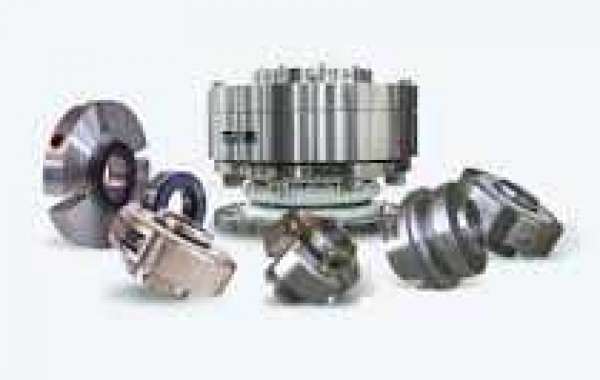Self-expanding stents are advanced medical devices designed to support and open blood vessels and other tubular structures in the body. They play a critical role in treating conditions like coronary artery disease and peripheral artery disease, where blocked or narrowed arteries restrict blood flow. Unlike traditional balloon-expandable stents, self-expanding stents use materials that naturally expand upon deployment, providing consistent pressure to the vessel walls and adapting to changes in vessel size. This flexibility makes them particularly effective in dynamic anatomical areas prone to movement, such as the carotid and femoral arteries. As minimally invasive solutions, self-expanding stents have become a preferred choice in many vascular interventions, offering patients shorter recovery times and fewer complications.
More info : https://www.econmarketresearch.com/industry-report/self-expanding-stents-market/
The Mechanics of Self-Expanding Stents: Material and Design Considerations
Self-expanding stents are typically made from shape-memory alloys, such as nitinol, which possess unique elasticity and thermal properties. Nitinol, an alloy of nickel and titanium, allows the stent to remain compressed during delivery and then expand automatically when it reaches body temperature. This material is highly flexible, conforming to the shape and movement of the blood vessel while maintaining the necessary radial force to keep the vessel open. The design of these stents is also crucial; their mesh-like structure provides stability while ensuring minimal obstruction to blood flow. The self-expanding mechanism and adaptable materials give these stents durability and resilience, making them an ideal choice for long-term support in challenging vascular environments.
Key Applications of Self-Expanding Stents: From Coronary to Peripheral Use
Self-expanding stents are used in various medical fields, with coronary and peripheral artery disease being two of the primary areas of application. For patients with coronary artery disease, self-expanding stents can be used to keep heart arteries open, improving blood flow and reducing the risk of heart attacks. In peripheral artery disease, these stents are instrumental in maintaining blood flow to the limbs, often preventing conditions that could lead to amputation if left untreated. Additionally, self-expanding stents have applications in carotid artery procedures to prevent strokes and are increasingly being used in non-vascular procedures, such as supporting airways and biliary ducts. Their versatility makes them valuable tools across a range of minimally invasive treatments.
Benefits of Self-Expanding Stents: Flexibility, Reduced Complications, and Enhanced Healing
Self-expanding stents offer several key advantages over traditional stenting options. Their flexibility allows them to adapt to natural vessel movements, which is particularly important in areas subject to frequent motion, like the legs and neck. This adaptability reduces the risk of stent migration and improves patient comfort. Moreover, self-expanding stents tend to have a lower risk of restenosis, or vessel re-narrowing, due to their ability to maintain consistent pressure without causing excessive vessel trauma. Because they are deployed in a controlled and minimally invasive manner, patients experience shorter recovery times, lower rates of infection, and fewer procedural complications. These benefits make self-expanding stents a safe and effective choice for both patients and healthcare providers.
Types of Self-Expanding Stents: Tailoring to Patient Needs
There are several types of self-expanding stents, each designed for specific medical needs and vascular regions. Bare metal stents, made solely of metal, are the simplest form, offering basic support to the vessel without any medication. Drug-eluting self-expanding stents, on the other hand, release medication over time to prevent tissue overgrowth around the stent, which can cause re-narrowing. Covered stents, also known as stent-grafts, have a synthetic coating that provides added support and prevents blood from leaking through the stent structure. This makes them especially useful in repairing vessel ruptures or aneurysms. By choosing the right type of stent based on the patient’s condition, physicians can provide tailored and effective treatment for each individual case.
Self-Expanding Stents and the Endovascular Revolution
The development and widespread adoption of self-expanding stents have contributed to what is known as the endovascular revolution—a shift toward minimally invasive vascular procedures. Endovascular treatments use catheter-based techniques to reach and treat blood vessels without the need for large incisions, offering an alternative to traditional surgery. Self-expanding stents play a crucial role in this revolution, as they can be deployed through small catheters and expand to provide immediate support to the vessel walls. This has broadened the range of patients eligible for treatment, particularly those who may not be suitable candidates for surgery due to age or underlying health conditions. As endovascular techniques continue to evolve, self-expanding stents remain at the forefront of modern, patient-centered vascular care.
Addressing the Challenges: Thrombosis, Durability, and Patient Outcomes
While self-expanding stents offer many advantages, they are not without challenges. One primary concern is the risk of thrombosis, or blood clot formation, which can occur if the stent irritates the vessel lining. To mitigate this risk, many self-expanding stents are designed with specialized coatings that promote endothelial cell growth over the stent, helping it integrate more smoothly with the blood vessel wall. Additionally, stent durability is a crucial factor, especially in areas with high mechanical stress. Manufacturers continuously test materials and structural designs to enhance longevity and reduce the risk of fracture. Long-term outcomes are generally favorable, but patients are usually advised to follow a regimen of anti-clotting medications to further reduce any risks associated with stent placement.
Innovations in Self-Expanding Stent Technology: Drug Delivery and Biodegradable Options
The field of self-expanding stent technology is marked by rapid innovation, with drug-eluting and biodegradable stents leading the charge. Drug-eluting stents release medication at the site of the stent to inhibit cell proliferation, reducing the risk of restenosis. This combination of mechanical support and targeted drug therapy has proven highly effective in promoting vessel healing and maintaining patency. Biodegradable self-expanding stents are an exciting area of research as well. These stents provide temporary support to the vessel but gradually dissolve over time, eliminating the need for a permanent implant. These innovations aim to address some of the long-term complications associated with stent implantation, ultimately improving patient outcomes and expanding treatment possibilities.
Self-Expanding Stents in Clinical Trials and the Path Forward
Clinical trials are essential to the development and refinement of self-expanding stents, providing valuable data on safety, efficacy, and patient outcomes across various applications. Recent trials have focused on enhancing drug-eluting stents for peripheral artery disease and testing biodegradable stents for temporary support. The data gathered from these studies not only informs regulatory approvals but also helps clinicians understand which patient groups can benefit most from different stent types. As clinical trials continue to expand, they play a critical role in advancing stent technology and supporting its adoption in diverse healthcare settings. This ongoing research and development promise to further enhance the quality, safety, and effectiveness of self-expanding stent solutions in the future.
Future Trends: AI and Precision Medicine in Stent Placement
The integration of artificial intelligence (AI) and precision medicine is poised to transform the future of self-expanding stent procedures. AI algorithms can help physicians analyze patient data to predict the ideal stent size, placement, and type based on each patient’s unique anatomy and health profile. Advanced imaging techniques and machine learning are already being explored to improve placement accuracy and assess blood flow patterns post-deployment. By combining stent technology with precision medicine, the medical community aims to personalize stent treatments, thereby reducing complications and enhancing long-term success rates. This intersection of technology and medicine holds great promise for optimizing the patient experience and improving outcomes in vascular care.
Contact Info
Phone Number: +1 812 506 4440
Email : [email protected]








